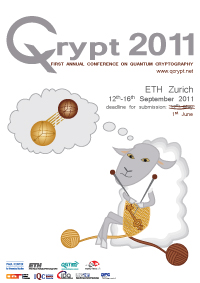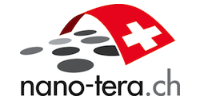|
|||||||||||
Merkle Puzzles in a Quantum World
Gilles Brassard, Peter Hoyer, Kassem Kalach, Marc Kaplan, Sophie Laplante and Louis Salvail
In 1974, Ralph Merkle proposed the first unclassified scheme for secure communications over insecure channels. When legitimate communicating parties are willing to spend an amount of computational effort proportional to some parameter N, an eavesdropper cannot break into their communication without spending a time proportional to N^2, which is quadratically more than the legitimate effort.
We showed in an earlier paper that Merkle's schemes are completely insecure against a quantum adversary, but that their security can be partially restored if the legitimate parties are also allowed to use quantum computation: the eavesdropper needed to spend a time proportional to N^{3/2} to break our earlier quantum scheme. Furthermore, all previous classical schemes could be broken completely by the onslaught of a quantum eavesdropper and we conjectured that this is unavoidable.
We give two novel key agreement schemes in the spirit of Merkle's. The first one can be broken by a quantum adversary that makes an effort proportional to N^{5/3} to implement a quantum random walk in a Johnson graph reminiscent of Andris Ambainis' quantum algorithm for the element distinctness problem. This attack is optimal up to logarithmic factors. Our second scheme is purely classical, yet it cannot be broken by a quantum eavesdropper who is only willing to expend effort proportional to that of the legitimate parties.
Wichtiger Hinweis:
Diese Website wird in älteren Versionen von Netscape ohne
graphische Elemente dargestellt. Die Funktionalität der
Website ist aber trotzdem gewährleistet. Wenn Sie diese
Website regelmässig benutzen, empfehlen wir Ihnen, auf
Ihrem Computer einen aktuellen Browser zu installieren. Weitere
Informationen finden Sie auf
folgender
Seite.
Important Note:
The content in this site is accessible to any browser or
Internet device, however, some graphics will display correctly
only in the newer versions of Netscape. To get the most out of
our site we suggest you upgrade to a newer browser.
More
information







